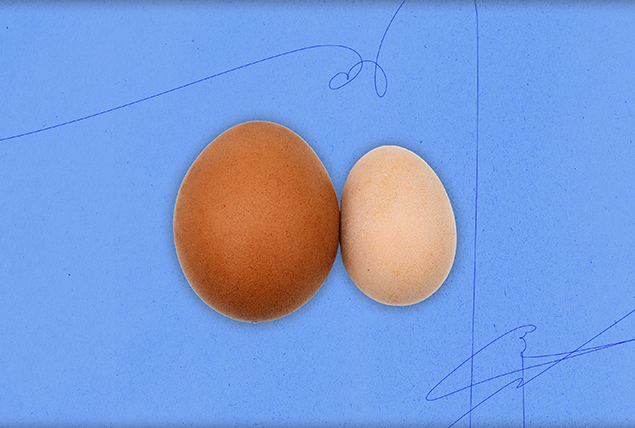How to Treat a Hydrocele and How One Is Diagnosed

A hydrocele is a relatively common condition in which fluid fills a sac that surrounds one or both testicles. It's typically painless but can result in swelling, discomfort, a sensation of heaviness in the scrotum and sometimes embarrassment when it happens to adults and older boys. A hydrocele feels like a small balloon and is typically found in front of the testicle.
They occur in about 10 percent of all newborn boys and 1 percent of adults but usually resolve on their own within six to 12 months. However, it's important to know how to treat a hydrocele.
Diagnosing and testing for a hydrocele
Diagnosing a hydrocele typically begins with a physical exam, but understanding how hydroceles work and what role they play in the development of the testicles makes it easier to know what healthcare providers are looking for.
When the gonads first appear while the baby is still in the womb, they develop near the kidneys, within the abdomen. When gender differentiation occurs, the testicles drop through an opening at the bottom of the pelvis called the inguinal canal but are still contained within a membrane named the tunica vaginalis that descends from the pelvis.
Typically, this membrane seals itself, and if fluid remains inside with the testicle, that creates what's called a noncommunicating hydrocele. Usually, any fluid contained within gets reabsorbed back into the body over the six to 12 months after the child is born.
However, sometimes the opening to the tunica vaginalis remains open to the abdomen above, allowing fluid to flow back and forth. This is called a communicating hydrocele. These hydroceles may change in size depending on what the person is doing throughout the day—particularly after lying down—since the fluid can flow back and forth.
A physical exam to diagnose a possible hydrocele involves checking the scrotum for swelling and pressing on the scrotum to see if the bulge changes under pressure. The provider may shine a light through the scrotum, which can help highlight the extra sac of fluid around the testicle. Alternatively, the doctor may ask the patient to cough, similar to how they would check for a hernia.
How to treat a hydrocele
Often, hydroceles don't cause any problems or discomfort—many men don't realize they have one until they undergo an exam for some other issue. They're often left alone unless, and until, they cause an issue.
However, if they grow larger and cause discomfort or embarrassment, men may opt to have them treated.
"If it's small and doesn’t bother the man, there's no need to do anything," said Amy Pearlman, M.D., a men's health specialist and co-founder of Prime Institute in Fort Lauderdale, Florida. "If it's bothersome—usually with larger hydroceles, as they can create a large bulge and cause some discomfort, as well as appearance concerns—we can drain them in the office.
"They are more likely to come back with that type of treatment, although some urologists will also inject medication into the area to reduce the risk of recurrence. We can also surgically remove them, with what are oftentimes quick, outpatient surgical procedures."
Potential complications of hydroceles
On its own, a hydrocele typically doesn't cause any complications. As noted previously, they are so benign that many men don't realize they have one. In most cases, when an infant is born with a hydrocele, it will disappear on its own within about a year.
There may be no exact explanation for why adult men develop hydroceles, but the condition is sometimes associated with trauma to the testicle. These need to be evaluated to make sure there isn't some associated problem.
A few other potential issues can go along with hydroceles. With a communicating hydrocele, the fact the connection to the inguinal canal remains open indicates the man is more likely to develop an inguinal hernia.
This is the type of hernia in which a loop of the intestine protrudes down into the scrotal sac. It can cause discomfort or become life-threatening if it gets trapped there and begins to strangulate and lose blood flow.
Sometimes, hydroceles may be associated with testicular tumors or other underlying health conditions, but they're typically benign and won't affect fertility or cause any other issues.
"Hydrocele may sometimes be associated with an injury to the testicle or affect the blood supply to the testicle," Pearlman said. "There's also a risk of hydrocele recurrence or infection, but typically the prognosis is very good."
Outlook for men with hydroceles
Most parents of infants born with hydroceles find that they go away on their own. In the rare cases when a baby's hydrocele remains beyond his first year, the family will be referred to a pediatric urologist for surgery to repair it in order to prevent any further complications.
These surgeries are routine, straightforward and relatively low-risk.
If a baby is born with a communicating hydrocele, it's usually considered best to surgically repair it in order to prevent future hernias from developing. Most babies born with a hydrocele have them repaired so they experience no further consequences or complications throughout their adult lives.
Adult men who develop hydroceles usually find they aren't bothersome and go away on their own. On rare occasions when a hydrocele grows larger, is associated with some other testicular trauma, causes discomfort or is otherwise annoying, typical treatments are usually easy to perform and are safe and relatively painless.
On occasion, the needle aspiration method of treating a hydrocele may be successful but the hydrocele reappears. In these cases, the doctor may perform the aspiration again, along with what's called sclerotherapy, an injection of a solution that causes the space between the sac and the testicle to shrink, in the hopes of discouraging fluid from re-accumulating.
The takeaways when it comes to hydroceles
Any kind of change in the appearance, shape or sensation in the testicles warrants a visit to a healthcare provider. However, if it turns out to be hydrocele, the outlook is very positive.
Often, they don't require any treatment and go away on their own, but even if they do require treatment, it is usually very low-risk and relatively painless.
Nobody wants anything weird to happen to their scrotum, but if you were to rank testicular problems, hydroceles would be preferred to the vast majority of other potential issues.


















